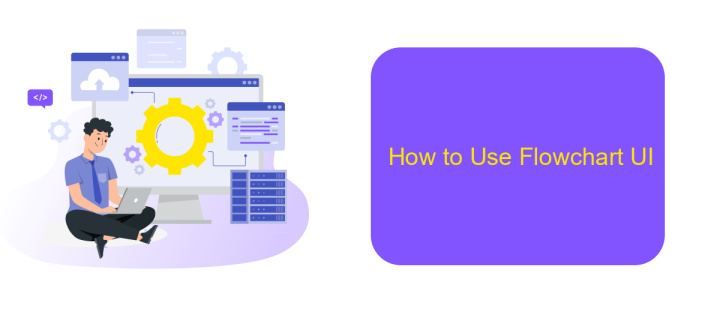What is the Main Feature of a Flowchart UiPath
A flowchart in UiPath is a powerful tool used to visually represent the sequence of steps in an automation process. Its main feature is its ability to provide a clear, intuitive, and organized layout of activities, making it easier to design, understand, and manage complex workflows. This enhances efficiency and reduces errors in robotic process automation (RPA) projects.
Overview
A flowchart in UiPath offers a visual representation of the workflow, making it easier to design and understand complex processes. The main feature of a flowchart is its ability to provide a clear and organized layout of activities, decisions, and events. This visual clarity helps in identifying the flow of operations and pinpointing any potential issues or improvements.
- Visual representation of workflows
- Easy identification of process steps
- Improved debugging and troubleshooting
- Enhanced collaboration among team members
- Seamless integration with other tools and services
For seamless integration of various services and applications within your UiPath flowchart, consider using ApiX-Drive. This platform simplifies the process of connecting different systems, ensuring smooth data flow and automation. With ApiX-Drive, you can easily set up and manage integrations, enhancing the efficiency and functionality of your UiPath workflows.
Benefits of Flowchart UI

Flowchart UI in UiPath offers a visual and intuitive way to design automation processes, making it easier for users to understand and manage complex workflows. By using flowcharts, users can clearly see the sequence of activities, decision points, and parallel processes, which enhances the overall clarity and efficiency of automation projects. This visual representation is particularly beneficial for teams, as it facilitates better communication and collaboration among members, ensuring everyone is on the same page.
Another significant advantage of Flowchart UI is its flexibility and ease of integration with various services and APIs. For instance, with tools like ApiX-Drive, users can seamlessly connect different applications and automate data transfers without extensive coding knowledge. This capability allows businesses to streamline their operations, reduce manual errors, and save valuable time. Additionally, the drag-and-drop interface of Flowchart UI makes it accessible for users of all skill levels, empowering them to create sophisticated automation solutions with minimal effort.
Key Features of Flowchart UI

Flowchart UI in UiPath provides a visual representation of processes, making it easier to design complex workflows. Its intuitive interface allows users to drag and drop activities, ensuring a seamless automation experience. This visual approach enhances understanding and simplifies debugging, making it ideal for both beginners and experienced developers.
- Visual Clarity: The flowchart offers a clear, graphical depiction of the workflow, making it easier to follow and understand.
- Ease of Use: With drag-and-drop functionality, users can effortlessly add and arrange activities within the workflow.
- Conditional Logic: Flowcharts support decision-making processes with built-in conditions and branching, enhancing workflow flexibility.
- Integration Capabilities: Seamlessly integrate with various services like ApiX-Drive to automate data transfer between applications and systems.
- Debugging and Monitoring: The visual layout simplifies the identification and resolution of errors, improving overall efficiency.
These key features make the Flowchart UI in UiPath a powerful tool for automating complex processes. By leveraging its visual nature, users can create, manage, and optimize workflows with greater ease and accuracy. Whether integrating with services like ApiX-Drive or managing conditional logic, the Flowchart UI ensures a streamlined and efficient automation journey.
How to Use Flowchart UI

Flowchart UI in UiPath provides a visual way to design complex workflows by using a diagrammatic approach. This method is particularly beneficial for users who prefer a graphical representation of their processes, making it easier to understand and manage the workflow.
To start using the Flowchart UI, open UiPath Studio and select the Flowchart template. Drag and drop activities from the Activities panel into the design area. Connect these activities using arrows to define the sequence and flow of actions. This visual representation helps in identifying logical errors and optimizing the process flow.
- Open UiPath Studio and create a new project using the Flowchart template.
- Drag and drop activities into the design area from the Activities panel.
- Connect activities using arrows to define the workflow sequence.
- Use the Properties panel to configure each activity as needed.
For integrating external services, such as API calls, you can use platforms like ApiX-Drive. ApiX-Drive simplifies the process of connecting different applications and automating data transfers, enhancing the capabilities of your Flowchart workflows in UiPath.
Best Practices and Troubleshooting
To ensure optimal performance when using a flowchart in UiPath, it is essential to adhere to best practices. Start by maintaining a clear and organized structure, making sure each activity is logically placed and labeled. This will make your flowchart easier to understand and debug. Utilize annotations and comments to provide context and explanations for complex processes. Additionally, regularly test your flowchart to identify and resolve issues early on. Implement error handling mechanisms to manage unexpected situations, and consider using the Retry Scope activity to handle transient errors.
When troubleshooting, ensure that all dependencies and integrations are correctly configured. For seamless integration, consider using services like ApiX-Drive, which can help automate and streamline the connection between different applications. If you encounter issues with specific activities, refer to the UiPath documentation and community forums for guidance. Logging and monitoring are also crucial; enable detailed logging to capture valuable information that can help diagnose problems. Finally, keep your UiPath Studio and activity packages updated to benefit from the latest features and bug fixes.
- Automate the work of an online store or landing
- Empower through integration
- Don't spend money on programmers and integrators
- Save time by automating routine tasks
FAQ
What is the Main Feature of a Flowchart in UiPath?
How does a Flowchart improve automation processes in UiPath?
Can I integrate external services within a UiPath Flowchart?
What types of decisions can be managed using a Flowchart in UiPath?
Is it possible to monitor and update a Flowchart after deployment in UiPath?
Routine tasks take a lot of time from employees? Do they burn out, do not have enough working day for the main duties and important things? Do you understand that the only way out of this situation in modern realities is automation? Try Apix-Drive for free and make sure that the online connector in 5 minutes of setting up integration will remove a significant part of the routine from your life and free up time for you and your employees.


